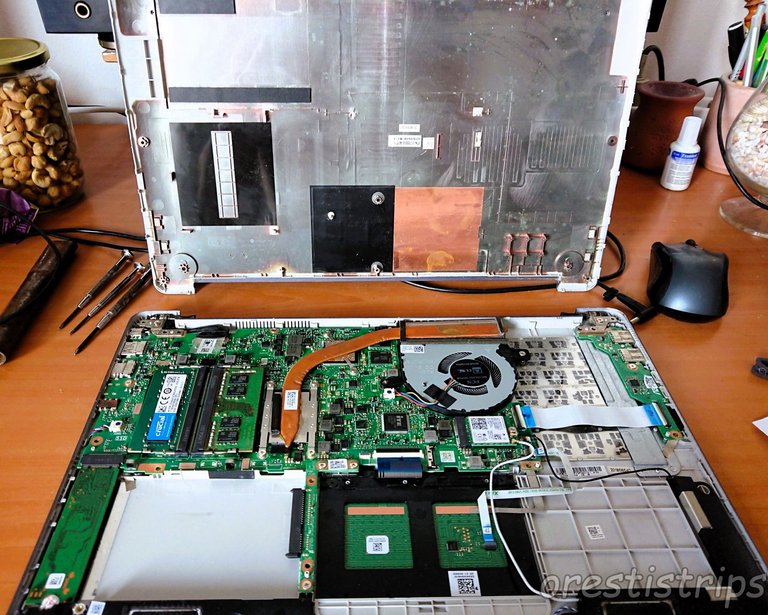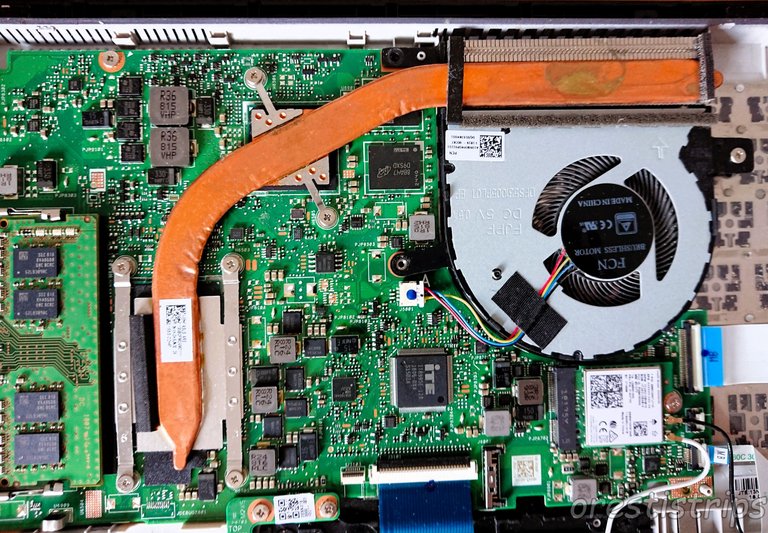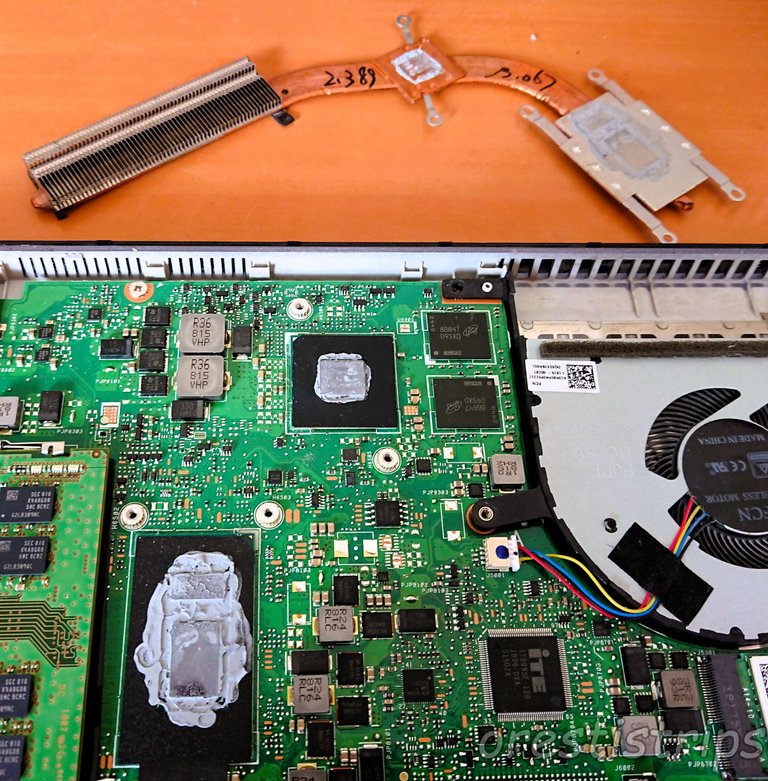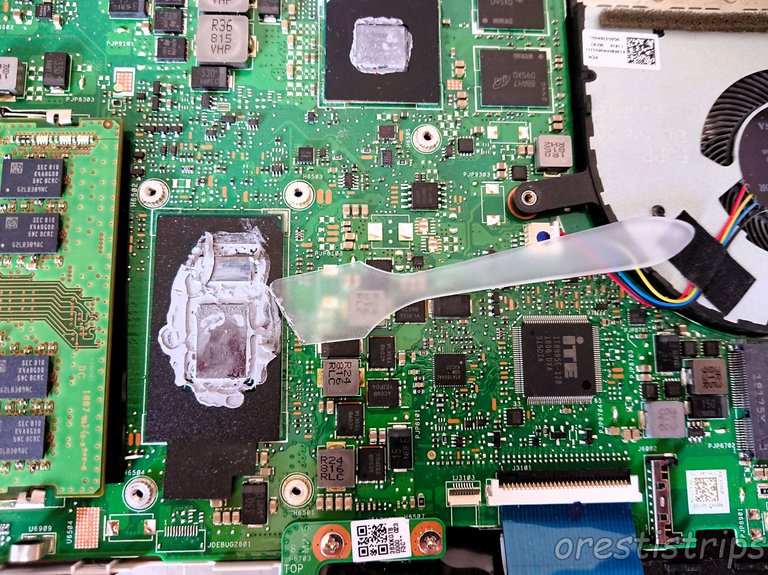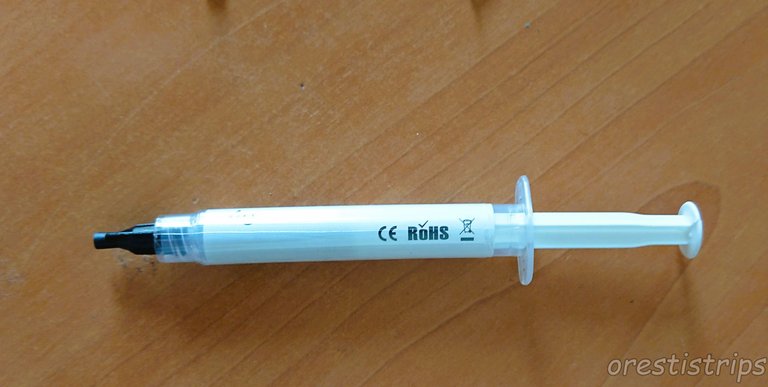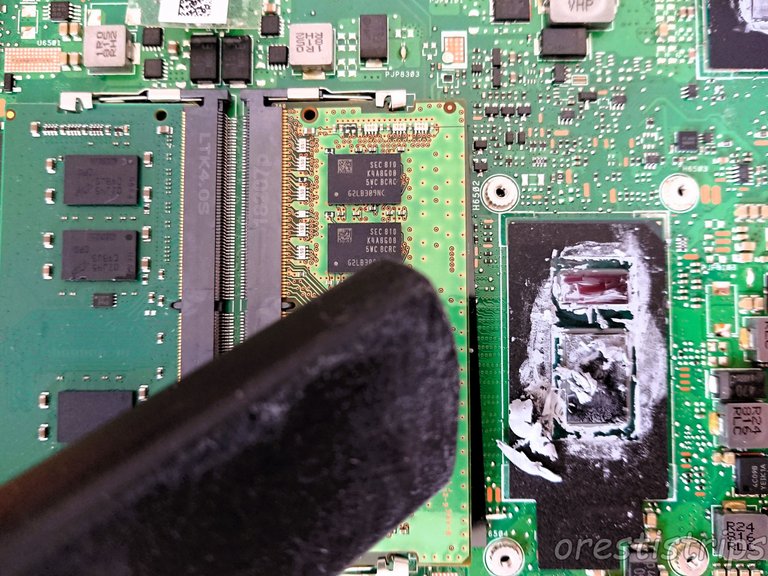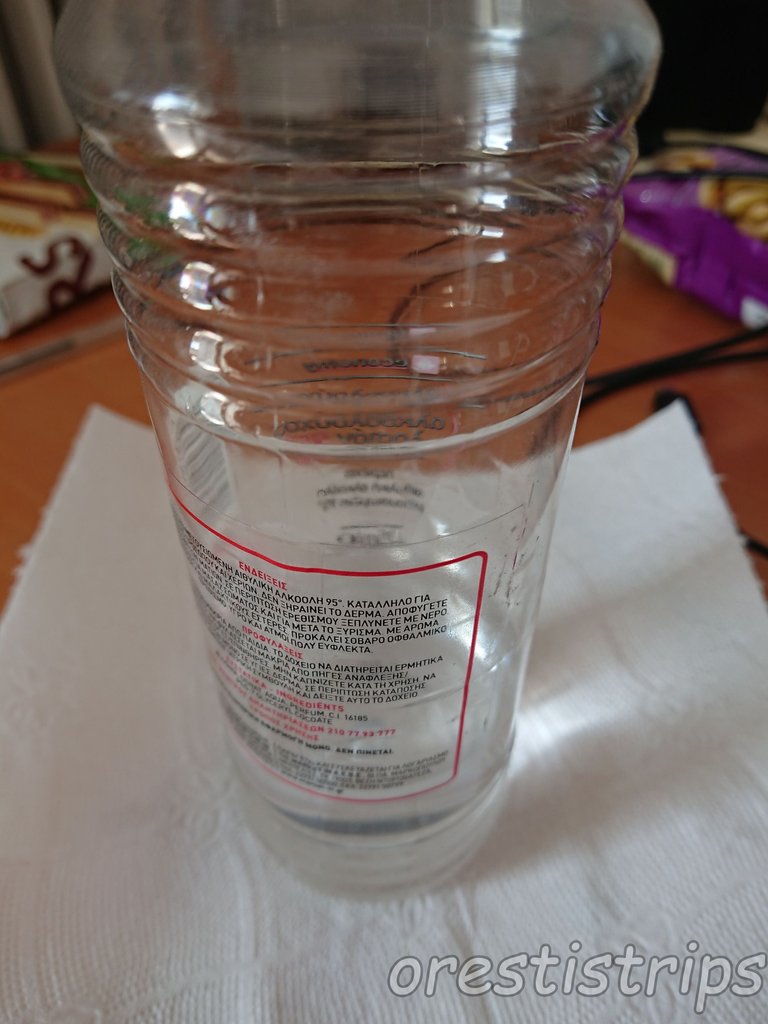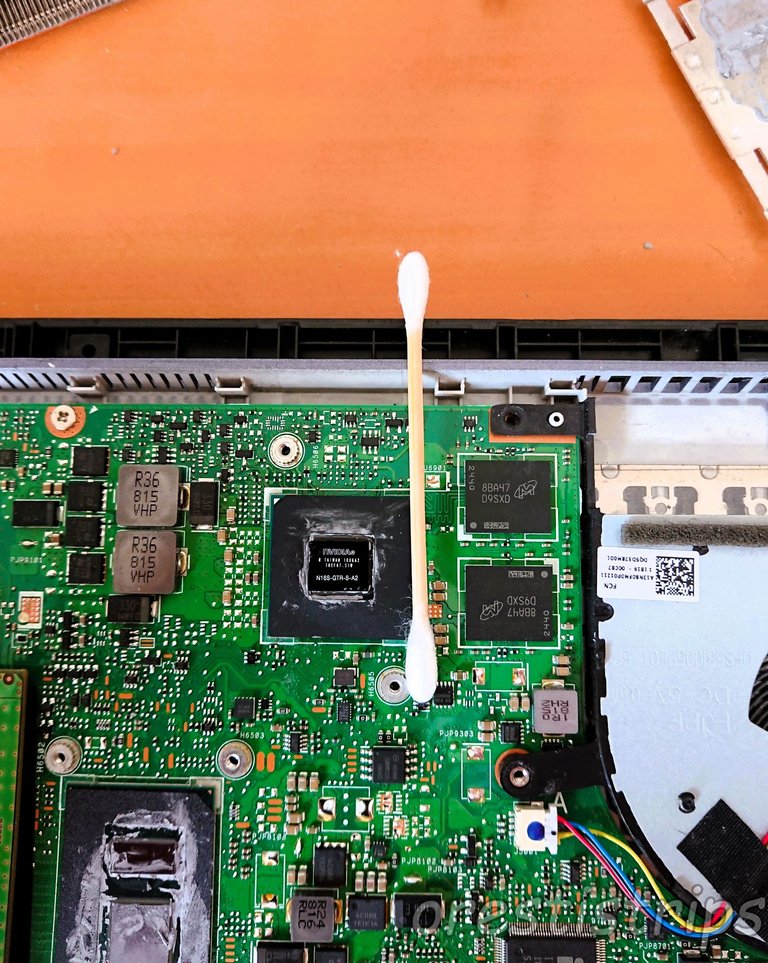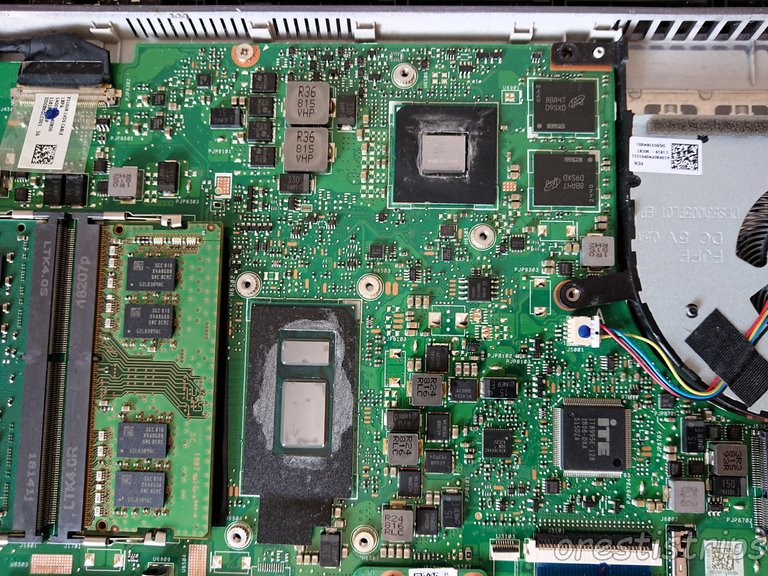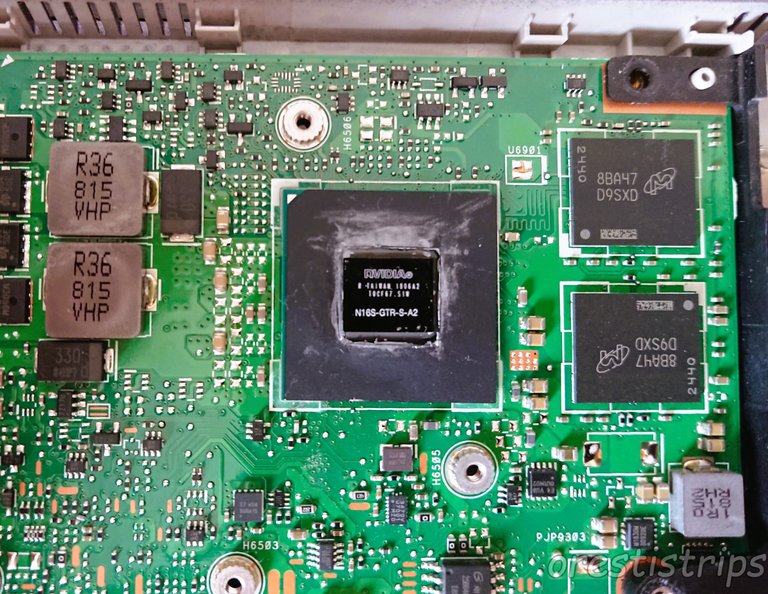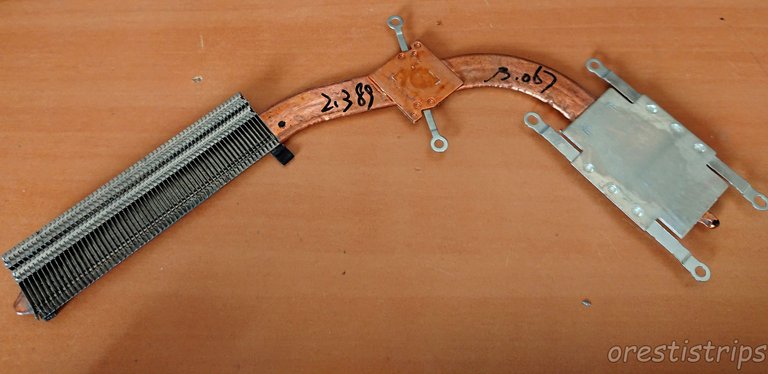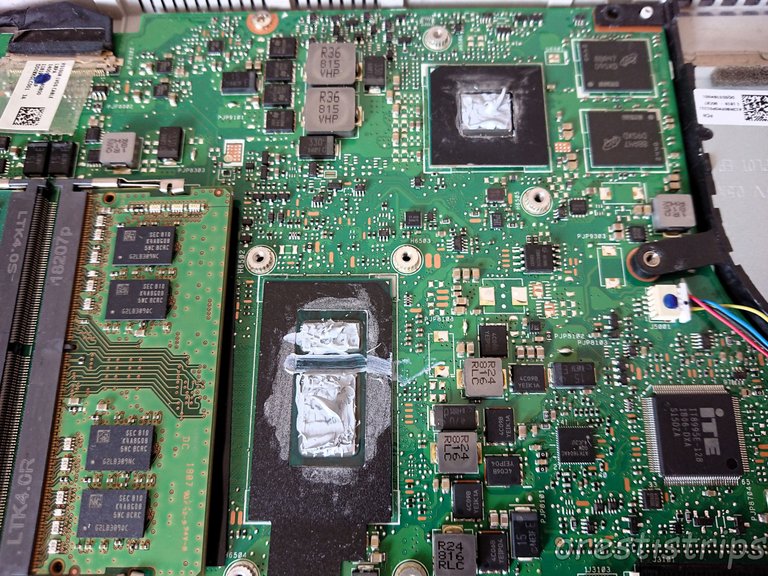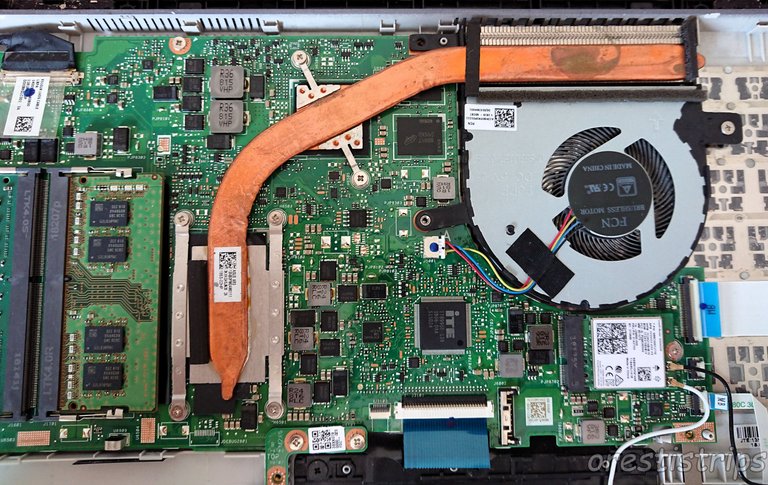This approach applies in all computers. I mention laptops because this is where overheating gets really annoying cause apart from slowing down your machine due to CPU throttling, it also makes it too noisy to work in peace while the fans work more time in higher revs. Also keep in mind that the following fix is not necessarily your fix, you might have other issues too.
First of all, needless to say that you must clean the cooling system of your laptop.
Let's open mine to have a look:
As you can see the cooling system of mine starts from the left over the CPU and its GPU, the heatsink continues up and right over the dedicated GPU and finishes in front of the fan with its cooling fins:
Removing the heatsink is very easy, in my case I just have to undo the four screws of the CPU/GPU and the two of the dedicated GPU diagonally located. Then lift the heatsink and that's it:
So some care while doing that, it's nothing difficult and bending the heatsink is not the end of the world but if you're too clumsy you might reach its limits of elastic distortion. The only thing that keeps it down after the screws is the thermal paste of the factory so you don't have to apply that much force but you have to treat it evenly to pry it out.
At this point I get my first disappointment as the original thermal paste doesn't look brittle as I expected therefore probably is still doing its job. In any case, since I'm here it's a point of no return so I have to finish the job.
Next step is to remove the old paste. Use whatever handy is available to you except sharp edged metal tools that might wear parts if you don't show the needed care. Again, not the end of the world but better safe than sorry. I initially used this plastic "spoon" that came together with the thermal paste I bought (in order to use it to apply the paste):
Speaking of the paste here, the one I bought:
If you want my advise, unless you plan to keep your laptop for many years you can just go for a cheap one like this. Prices vary a lot and from cheap to expensive you might pay 5+ times more which starts to make the cost noticeable. In my case I don't care if the paste "dies" in 5 years instead of 10 so I just went for this cheap one. Plus I wasn't sure I'll fix it anyway so why invest on that.
The best way to remove residue without the risk of interfering with sensitive laptop parts is a vacuum:
There's still some rubbing needed so I use some alcohol and paper but any contact cleaner that doesn't leave residue can do the job:
Cotton swabs can help a lot too, soaked in alcohol, contact cleaner or whatever solution you use:
Post cleaning:
Now that its clean you can see for example what my NVIDIA GPU chipset reads:
Of course you should clean the heatsink too which is easier:
Time to apply the paste. I really wanted to make a cleaner job than this but as should as I pressed the container it went SPLASH so I had to take the paste that was spread around the board and put it back on the processors:
If you wonder how much and how you should put the paste, I can give you a general tip that will keep you on the safe side: Speaking of how much, your only concern is to not put too little. Of course you don't have to flood your machine just for the peace of mind but your only concern is to not leave gaps. Therefore, you can follow this way: spread a relatively thin film of spray that will "paint" the whole surface and put a bit more in the center which will be spread by the heatsink itself when you'll put it back and will cover any spots you might have left behind. In the image above I have put more paste than needed but the same was done by the factory as you can see in the first images hence all that spread around.
When you're done it's time to put the heatsink back on:
Tighten the screws till you feel they reach an end and that's it. You don't have to overtighten but be sure they go all the way down so the heatsink lies flat on the chipsets.
So, do I see a difference in how the fan works now? Not as much as I wanted but audibly I do find it a little more quiet and by hand I can feel it a little less hot at the bottom where its hottest point is (under the CPU). You can use a PC monitoring program if you want for more accurate judgement, I just have a shitload of commitments at the moment including moving to another place so I didn't.
In general, laptops tend to use their fans more and more as they grow old and yes, the crazy amount of dirt the cooling fan accumulates (pity I don't have images of mine pre cleaning) plus the aging of its thermal paste can definitely be the culprit. But at the same time the OS is getting heavier due to all these updates which combined with all the programs and plugins you might have installed put an ever increasing burden on your machine. So try to keep it as neat and light as possible too. I'm considering installing Tiny11 if things get more annoying in the future. And also considering buying a mega tablet when they come to a point that they can easily substitute a laptop even for creators. No fans!
Hope that helped you, have a nice day!
